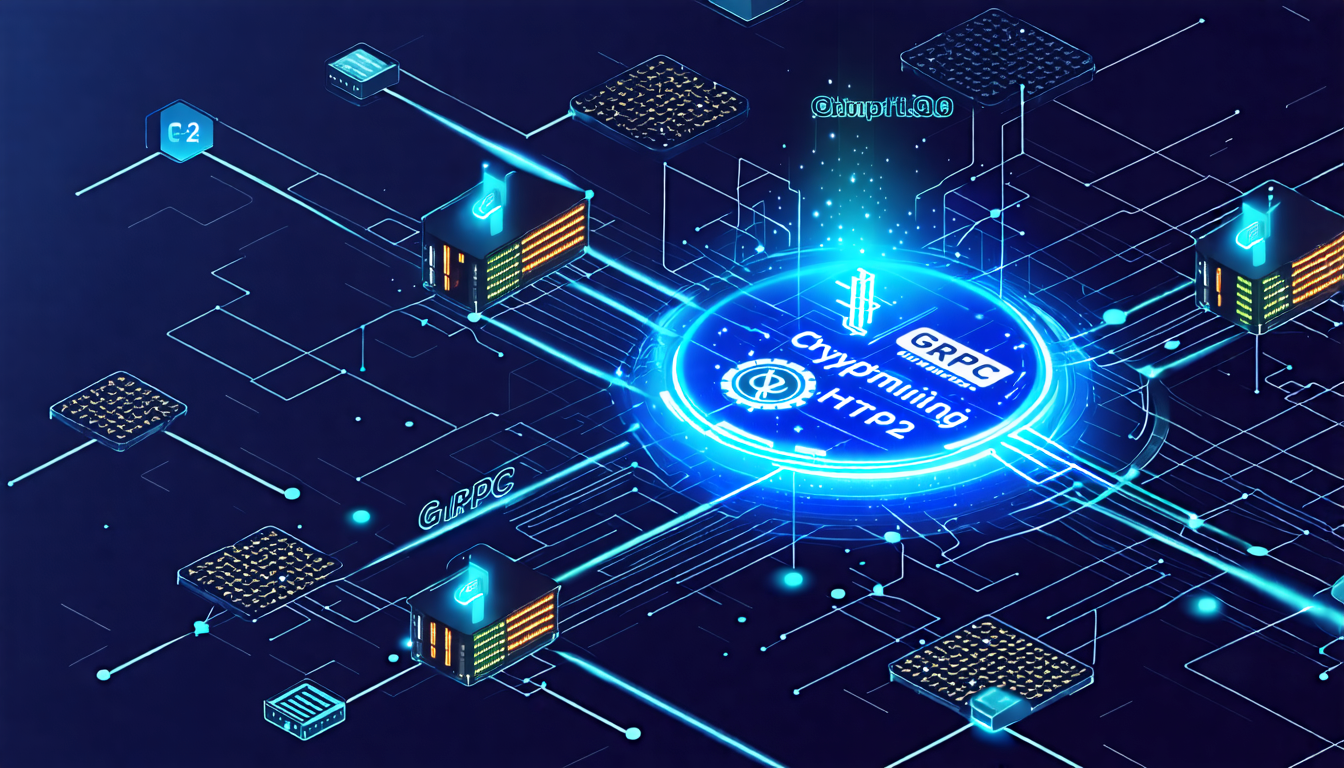With the growth of cryptocurrency, deploying mining software covertly has become a lucrative activity for cybercriminals. One unconventional method involves using gRPC over HTTP/2 to deploy cryptominers, leveraging the latest in web communication tech to facilitate illicit operations. This article delves into the techniques and challenges involved in such deployments, highlighting the importance of security in avoiding exploitation.
Understanding gRPC and HTTP/2
gRPC is a high-performance open-source universal RPC (Remote Procedure Call) framework that leverages HTTP/2 for communication. It is designed for connecting services in and across data centers and enables efficient communication through its use of HTTP/2's features. Key characteristics include:
- Header Compression: HTTP/2 compresses headers to reduce the amount of data transferred.
- Multiplexed Streams: Multiple requests and responses can be sent over a single TCP connection without blocking each other.
- Binary Framing: Unlike HTTP/1.x which uses plain text, HTTP/2 is binary and more efficient in parsing.
These features make HTTP/2 and, consequently, gRPC appealing for rapid data exchange, albeit providing potential avenues for exploiting insecure systems.
Deploying Cryptominers: Techniques and Exploitation
Exploiting Vulnerabilities
One common method for deploying cryptominers involves exploiting vulnerabilities such as remote code execution (RCE). For example, vulnerabilities like CVE-2023-22527 in Confluence can enable attackers to deploy cryptominers by executing malicious scripts. Attackers often utilize these exploits to introduce cryptomining software and ensure it runs efficiently on the host system.
Misconfigured Servers
Another avenue involves gaining access to misconfigured servers, such as Jenkins instances open to the internet. Attackers exploit these by accessing exposed resources like the Jenkins Script Console to execute arbitrary code, which can include cryptomining scripts. Unsecured endpoints become gateways for attackers to deploy and maintain mining activities effectively.
Using Malicious Scripts and Tools
Attackers employ tools and scripts like XMRig miners — software specifically designed for mining cryptocurrencies — alongside shell scripts to automate the deployment. Persistence techniques, such as cron jobs, ensure these mining operations continue after reboots. These scripts are often engineered to stealthily run, consuming system resources over time without immediately alerting administrators.
Security Considerations and Countermeasures
HTTP/2 and TLS Requirements
.HTTP/2 mandates the use of TLS 1.2 or higher, enforcing strict encryption standards to prevent conventional attacks. Using appropriate cipher suites is crucial in securing communication channels.
Ensuring Proper Configuration
To prevent exploitation, it is vital to implement effective security measures. These include:
- Authentication and Authorization: Ensure only verified and authorized personnel can access critical systems.
- Secure Configuration: Regularly audit and update all software, following best practices for security configuration.
- Audit Logging: Keep comprehensive logs of network activity to detect unusual patterns that may indicate hacking attempts.
- Restricting Accessibility: Limit exposure of servers and essential endpoints to the wider internet.
Emerging Threats and Ongoing Vigilance
The adoption of emerging technologies like gRPC over HTTP/2 in non-traditional deployments illustrates the evolving threat landscape. As cryptominers increasingly exploit these protocols, organizations must remain agile, continuously updating security postures to mitigate risks. Proactive defense, routine audits, and comprehensive employee training are critical to safeguarding digital assets against these advanced exploitation tactics.
In conclusion, while the use of gRPC and HTTP/2 for deploying cryptominers is innovative, it signals a need for robust security strategies that match the complexity of modern web technology. Staying informed and prepared is the ultimate defense against such advanced persistent threats in the cyber realm.
Logics Technology Managed IT Services
